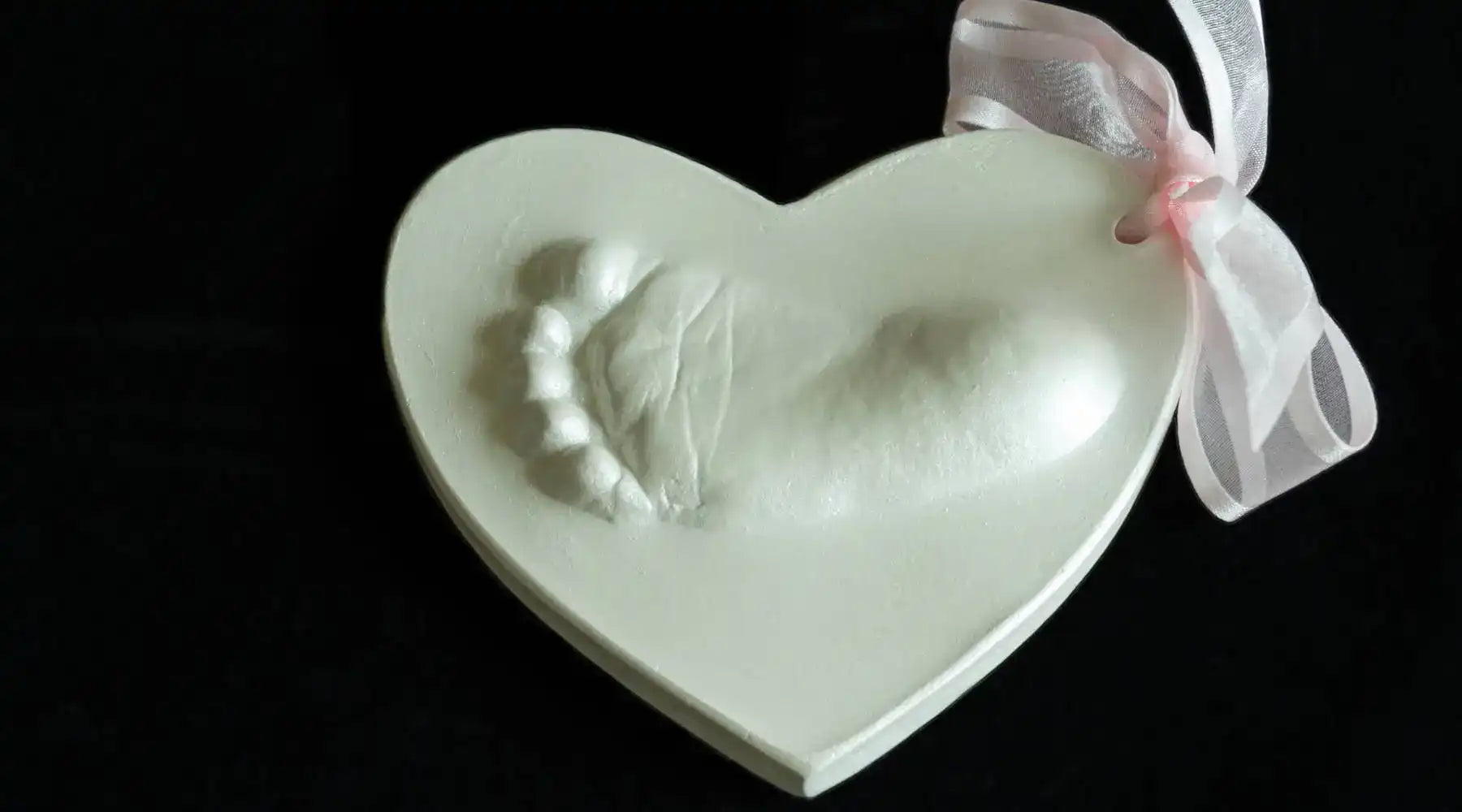Newborn Sleep Essentials
Learn More
In the first weeks of life, newborns need a lot of rest—usually 14–17 hours per 24-hour period, but broken into short stretches of 2-4 hours. Their sleep tends to be unpredictable: frequent waking for feeds, naps throughout the day, and a confused sense of day vs. night because the circadian rhythm hasn’t yet matured. Safe sleep practices are critical. Experts (including the AAP) recommend room-sharing without bed-sharing for at least the first 6 months (ideally up to a year), placing babies in their own crib or bassinet in the parent’s room on a firm, flat, uncluttered sleep surface.
How much should a newborn sleep?
Newborns need 14–17 hours of sleep every 24 hours, but it rarely comes in long stretches. Most babies sleep in short bursts of 2–4 hours at a time, both day and night. Every baby is different—some nap more frequently while others have slightly longer stretches. As long as your baby is eating well, gaining weight, and having regular wet diapers, their sleep patterns are usually right on track.
When is it okay to stretch nighttime sleep?
Most newborns need to feed every 2–3 hours, especially in the first weeks. Once your baby is gaining weight well and your pediatrician approves, many babies can start taking longer stretches at night around 2–3 months. Always follow your pediatrician’s guidance before letting your newborn go longer without feeds.
Safe Sleep Refresh
Learn More
Safe sleep is one of the most important parts of infant care. The American Academy of Pediatrics (AAP) recommends following the “ABC” rule—Alone, Back, Crib—for every sleep. This simple guideline helps lower the risk of Sudden Infant Death Syndrome (SIDS) and other sleep-related incidents. Even though blankets, pillows, or stuffed animals may seem cozy, they’re not safe until after your baby’s first birthday. Creating a safe sleep space supports healthy rest and gives parents peace of mind.
What changes once baby can roll both ways?
The safest sleep position is on the back, for every nap and every night, until your baby turns 1. Back-sleeping helps keep the airway open and lowers the risk of SIDS.
Once your baby can roll both ways independently, you don’t need to reposition them, but you should still always start sleep on the back.
Do I need to use a sleep positioner or wedge?
No. Sleep positioners, wedges, and inclined sleepers are not recommended because they increase the risk of suffocation. The safest setup is always a flat, firm sleep surface.
Sleep Environment Tweaks
Learn More
The right sleep setup makes a big difference in both safety and rest. Babies sleep best in a calm, consistent, and clutter-free environment. A safe nursery should be cool, dark, and quiet, with a firm mattress in a bare crib or bassinet. Tools like white noise, blackout curtains, and proper clothing can help your baby settle more easily while supporting safe sleep.
What makes a good sleep environment for babies and kids?
A good sleep environment is safe, quiet, and comfortable. Use a firm mattress with a fitted sheet in a safety-approved crib or bassinet. Keep the crib clear of pillows, blankets, bumpers, or toys. Maintain a cool, dimly lit room and follow the same setup every night to help your baby feel secure.
Should I use a white noise machine?
Yes—white noise can soothe babies by mimicking the womb and blocking background noise. Keep the volume low (no louder than a shower) and place it across the room, not near the crib. Continuous sounds like white or brown noise are best; avoid loud or startling sounds.
Sleep Training Basics (4-6+ Months)
Learn More
Sleep training helps babies learn to fall asleep on their own and stay asleep through the night. Most experts recommend starting around 4–6 months, when babies are developmentally ready for longer sleep stretches and not needing frequent night feeds. Every method has trade-offs, so choosing one that aligns with your baby’s temperament and your family’s comfort is key. Consistency, patience, and a safe sleep environment make a big difference.
How do I pick a method we’ll actually stick with?
Match your comfort and baby’s temperament:
- Faster: Ferber / CIO (with safe conditions).
- Gentler: Chair / Pick Up–Put Down / fade assists.
Consistency beats perfection.
How long until we see changes?
Often 3–7 nights for improvements; full stability can take a few weeks. Regressions (teething/illness/travel) are normal—stay the course.
Nap Schedules & Transitions
Learn More
Baby nap needs evolve rapidly during the first couple of years. Learning to recognize tiredness cues, wake windows, and signs your child is ready to drop naps helps prevent overtiredness and supports more peaceful naps and nights. A flexible yet consistent approach helps all involved get better rest.
How many naps by age?
Nap frequency depends on age:
- Newborns (0-3 months): ~4-6 naps/day scattered throughout the day.
- 4-6 months: ~3-4 naps.
- 7-12 months: ~2-3 naps.
- Toddlers (12-18 months): typically 1-2 naps.
By about 18 months, many children settle into one daily nap lasting 1-3 hours.
What are healthy wake windows?
- 45–90 min (newborn)
- 1.5–3 hr (3–6 mo)
- 2–3.5 hr (6–9 mo)
- 3–4 hr (9–12 mo)
- 3–5 hr (12–18 mo)
- 4–6 hr (18+ mo)
Dropping to one nap—when and how?
Most shift to one nap between 12–18 months. Signs: refusing nap #2, late bedtimes, or happy days on one nap. Alternate 1-nap/2-nap days during transition.
Toddler Sleep Challenges
Learn More
Sleep for toddlers often brings new challenges—bedtime resistance, early rises, transitions like moving out of a crib, and fluctuations in nap needs. With consistent routines, soothing bedtime environments, and patience through change, many of these hurdles can be smoothed out over time.
Why is bedtime suddenly a cage match?
Bedtime resistance in toddlers often comes from growing independence, fear of missing out, overstimulation near bedtime, or inconsistent schedules. A calming, predictable routine (bath, pajamas, story, lights dimmed) helps cue your child that sleep time is approaching and makes the transition easier.
Early morning wake-ups—how do we fix them?
Early morning wakings are common. Solutions include: adjusting bedtime earlier if too late; ensuring the sleep environment is dark (blackout curtains); using toddler clocks or nightlights that signal appropriate wake-up times; and checking that naps are not too late or too long—daytime sleep heavily influences morning rise times.
Should toddlers have a bedtime routine?
Yes—routines provide consistency and help toddlers wind down. A predictable sequence (bath, pajamas, story, lullaby, bed) in a calm environment works best. Avoid screens and overly stimulating activities close to bedtime. Over time, routines become cues for sleep and reduce bedtime battles.
When to switch—and how to keep them in bed?
This transition usually occurs between 18 months to about 3 years, often prompted by climbing out of the crib or developmental readiness. To ease the shift: talk about the “big kid bed” positively, keep bedtime routines the same, use safety rails, childproof the room, and expect a period of adjustment as your toddler tests boundaries.
Night wandering after the switch—help!
Limit liquids before bed, one “bedtime pass”, quiet returns to bed, praise mornings when they stayed put.
Night Wakings & Regressions
Learn More
Night wakings are one of the most exhausting parts of early parenthood—and regressions can feel like setbacks just when you thought you were making progress. Both are normal parts of baby development, but with a little patience and consistency, most families find their rhythm again within a few weeks.
Why is my baby waking up every hour?
Frequent wakings can happen for several reasons:
- Newborn stage: Babies have shorter sleep cycles and need frequent feedings.
- Hunger: Older babies may still need 1–2 night feeds, especially during growth spurts.
- Comfort: Wet diapers, teething pain, or a too-warm room can cause wakings.
- Sleep associations: If your baby relies on rocking or feeding to fall asleep, they may struggle to resettle without it.
Checking sleep environment (dark, cool, quiet), feeding routines, and wake windows can often reduce hourly wakings.
What causes sleep regressions?
Sleep regressions are temporary disruptions usually linked to developmental milestones or changes in routine. Common ages include:
- 4 months: Sleep cycles mature, causing more frequent wake-ups.
- 8–10 months: Crawling, standing, and separation anxiety.
- 12 months+: Walking, language bursts, or nap transitions.
These regressions typically last 2–6 weeks and resolve as your baby adjusts.
How can I help my child sleep through the night?
Here are strategies that are often helpful:
- Stick to a predictable bedtime routine (bath, book, cuddle, sleep).
- Follow age-appropriate wake windows to prevent overtiredness.
- Encourage self-soothing by putting baby down drowsy but awake.
- Offer full feedings during the day to reduce nighttime hunger.
Patience is key—some babies naturally sleep through the night earlier than others.
Travel, Time Changes & Disruptions
Learn More
Travel, daylight savings, and changes in routine can all throw off your baby’s sleep. While it’s normal for rest to be rocky during transitions, a little planning and consistency can make the adjustment much smoother.
How do I help my baby sleep while traveling?
Travel can throw off even the best sleepers. To help:
- Bring familiar sleep items like a sleep sack or favorite pacifier
- Stick to your usual bedtime routine as much as possible
- Use white noise to drown out new sounds
- Keep naps on schedule, even if they’re on the go
Familiarity and consistency will help your baby adjust more smoothly.
How long does it take to adjust to a new sleep schedule?
Most babies takea few days to a weekto adjust to travel or schedule changes. For jet lag, a common rule isone day per hour of time difference. Exposure to natural daylight during the day and keeping bedtime routines consistent speeds up the process.
What are tips for daylight savings time?
Daylight savings can disrupt sleep, but gradual adjustments help. About a week before the change, shift bedtime earlier or later by 10–15 minutes each night. Keep naps and wake-up times consistent, use blackout curtains to block early morning light, and maintain bedtime routines to signal when it’s time to sleep.
Sleep Products & Gear
Learn More
The right gear makes sleep safer and easier. Sleep sacks beat blankets for infants, firm crib mattresses are non-negotiable, and monitors can provide extra reassurance. Avoid weighted products for babies under one year to keep sleep both safe and comfortable.
Are sleep sacks better than blankets?
Yes. Sleep sacks are safer than loose blankets for babies under 12 months because they reduce the risk of suffocation. They keep your baby warm without covering the face and help prevent overheating when you choose season-appropriate fabrics.
What is the best crib mattress?
The best crib mattress is firm, flat, and snug-fitting in the crib with no gaps. Look for models that meet current safety standards and include waterproof covers for easy cleaning. Breathable designs are popular, but firmness is the number one safety factor.
Should I use a baby monitor?
Baby monitors aren’t required, but many parents find them helpful. They allow you to check on your baby without entering the room, which can support independent sleep. Choose a style that fits your comfort level—from simple audio to advanced video or Wi-Fi options.
Are weighted sleep sacks safe?
No. The American Academy of Pediatrics advises against weighted sleep sacks for infants because they may restrict movement and increase safety risks. Stick to unweighted sleep sacks until after the first birthday, when regular bedding becomes safer.
Miscellaneous Sleep Questions
Learn More
Baby sleep can be affected by everything from teething to growth spurts, and even the occasional snore. Keeping track with apps or simple logs helps parents see patterns and adjust routines. Most disruptions are temporary and part of normal development.
Is snoring in babies normal?
Occasional soft snoring can be normal, especially with mild congestion. But loud, frequent snoring—or pauses in breathing—may signal issues like sleep apnea. If you notice these, talk to your pediatrician.
Can teething affect sleep?
Yes—teething often disrupts sleep. Babies may wake more often due to sore gums. Offering a chilled teething toy before bed or extra comfort during the night can help. The good news: these phases are temporary and usually pass once the tooth breaks through.
How do growth spurts impact sleep?
Growth spurts can make babies either sleep more or wake more often to feed. Both are normal. Expect disruptions around 2–3 weeks, 6 weeks, 3 months, and 6 months. Things usually settle once the growth spurt passes.
What’s the best way to track sleep?
The best method is the one you’ll actually use consistently. Options include:
- Sleep apps for digital logging
- Wearable baby monitors for automatic tracking
- Paper logs for a simple, no-tech option
Tracking helps you spot patterns in naps, night wakings, and wake windows, making it easier to plan routines that work.










